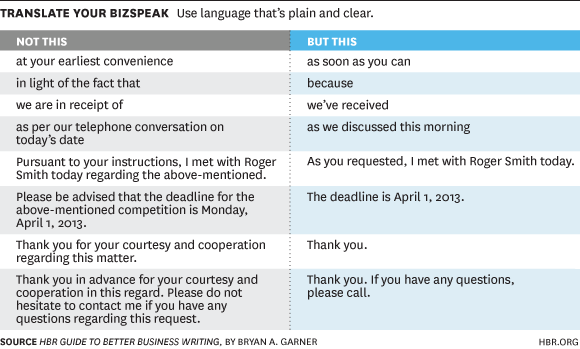10 Follow-Up Email Mistakes That Are Costing You Time and Money
Jenny Keohane
Contents
- 1. Hiding Key Elements in Long Text
- 2. Leaving Your Recipient in the Dark With No Context
- 3. Sounding Like a Robot
- 4. Giving up Too Soon
- 5. Not Personalizing Your Emails Enough
- 6. Sending Your Follow-Up at the Wrong Time
- 7. Ignoring the Data
- 8. Relying on Generic Follow-Up Messages and Touches
- 9. Not Realizing You’re Sending a Follow-Up Email
- 10. Not Making It Easy for the Customer
- Don’t Forget the Basics
A follow-up email is usually about getting what you want, but you can’t do that without giving your recipient what they want.
Hint: your message can’t be riddled with mistakes. No typos, crimes against grammar, or poor manners.
We’ve covered good follow-up email templates in a separate post, so now it’s time to cover the bad and the ugly. Below are ten common follow-up email mistakes to avoid at all costs.
1. Hiding Key Elements in Long Text
It’s easy to get carried away with engaging your recipient and sparking conversation. And while these are important factors to incorporate in your follow-ups, make sure that the text isn’t smothering the main reason behind your message.
Before clicking send, ensure your ask is clear and that the recipient knows why you’re reaching out and why they should care about responding.
How to do this: Use bold words to draw the recipient’s attention to important information.
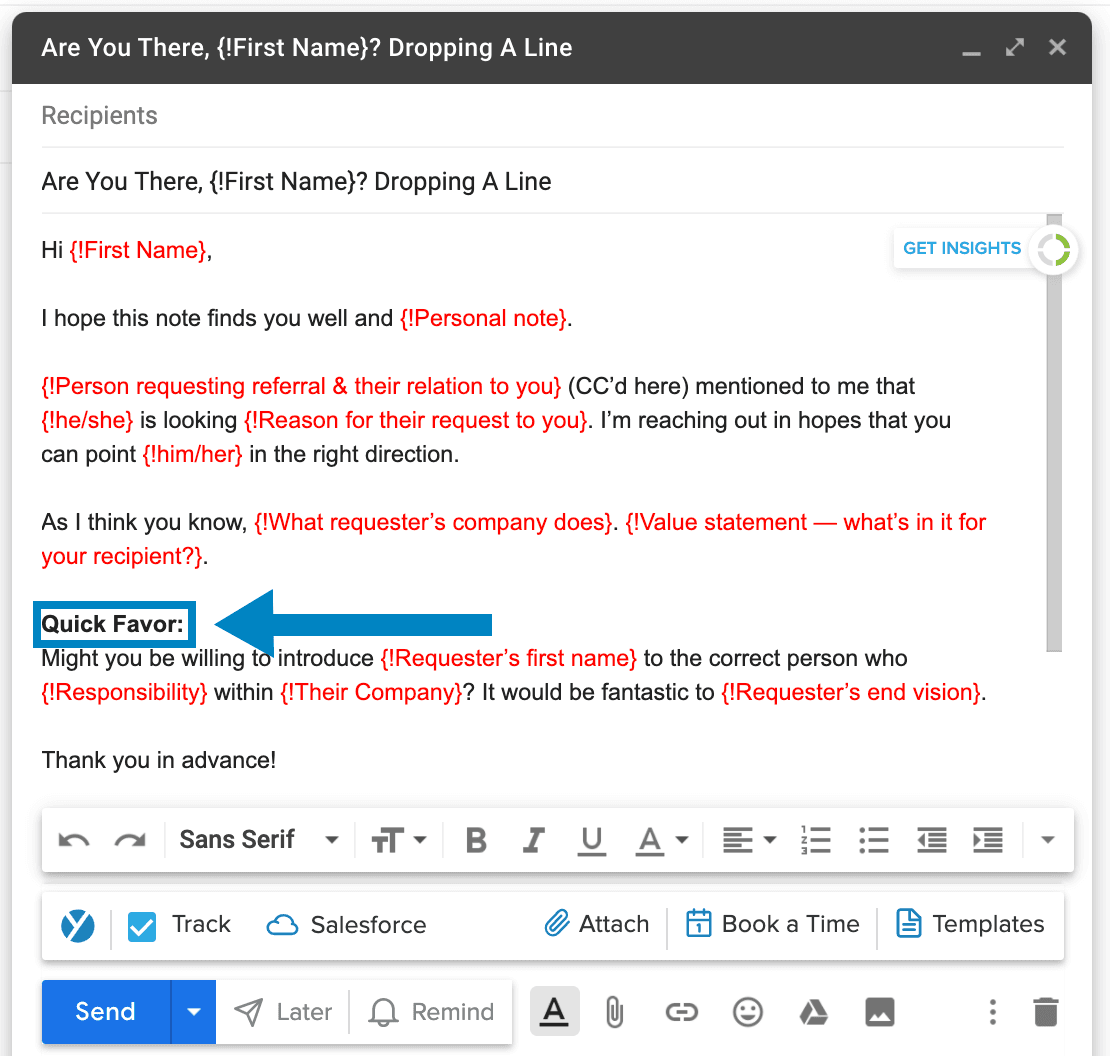
Another way you can make your email easier to read and navigate is to use bullet points or numbers to separate your ideas.
This way your recipient can skim your email and still gather important pieces of information.
If you make it easier for your prospect to find the main points of the message before clicking away, they’re likely to stay on your message longer — so make the information listed catchy, valuable, and relevant.
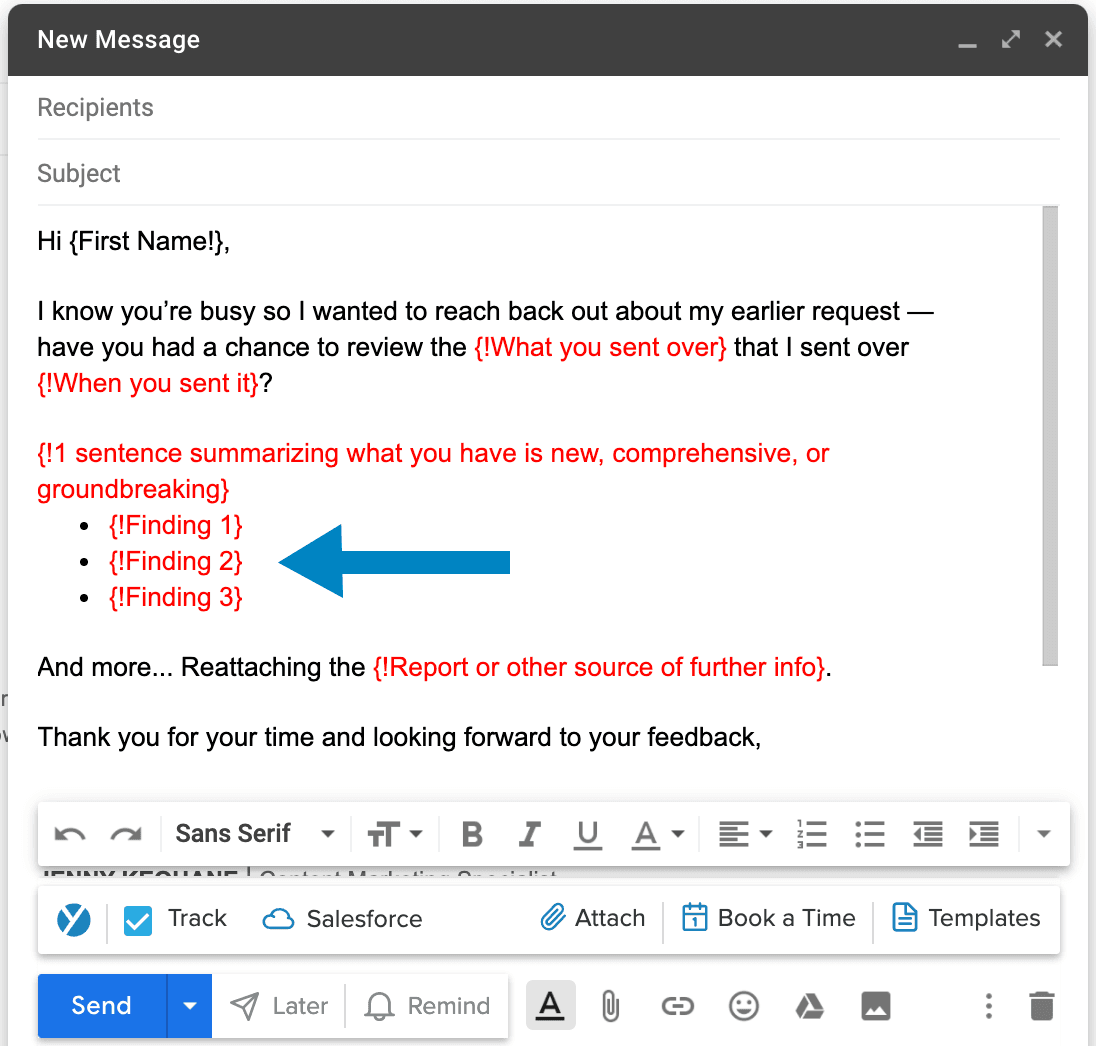
After you type your message — read it over and trim unnecessary sentences.
The shorter and more concise, the better. Ignore the lengthy stories in your first engagement – keep it simple. AND keep it valuable.
Try writing multiple drafts of the same sales email, refining it each time for clarity, tone, and verb strength. From there on out it’s all about tracking your response rates and iterating as needed. The messaging that works best, save it as a template so you can reuse it.
2. Leaving Your Recipient in the Dark With No Context
One of the most common follow-up email mistakes is unintentionally leaving recipients in the dark.
Here’s an example of an ambiguous follow-up email that leaves the recipient confused.
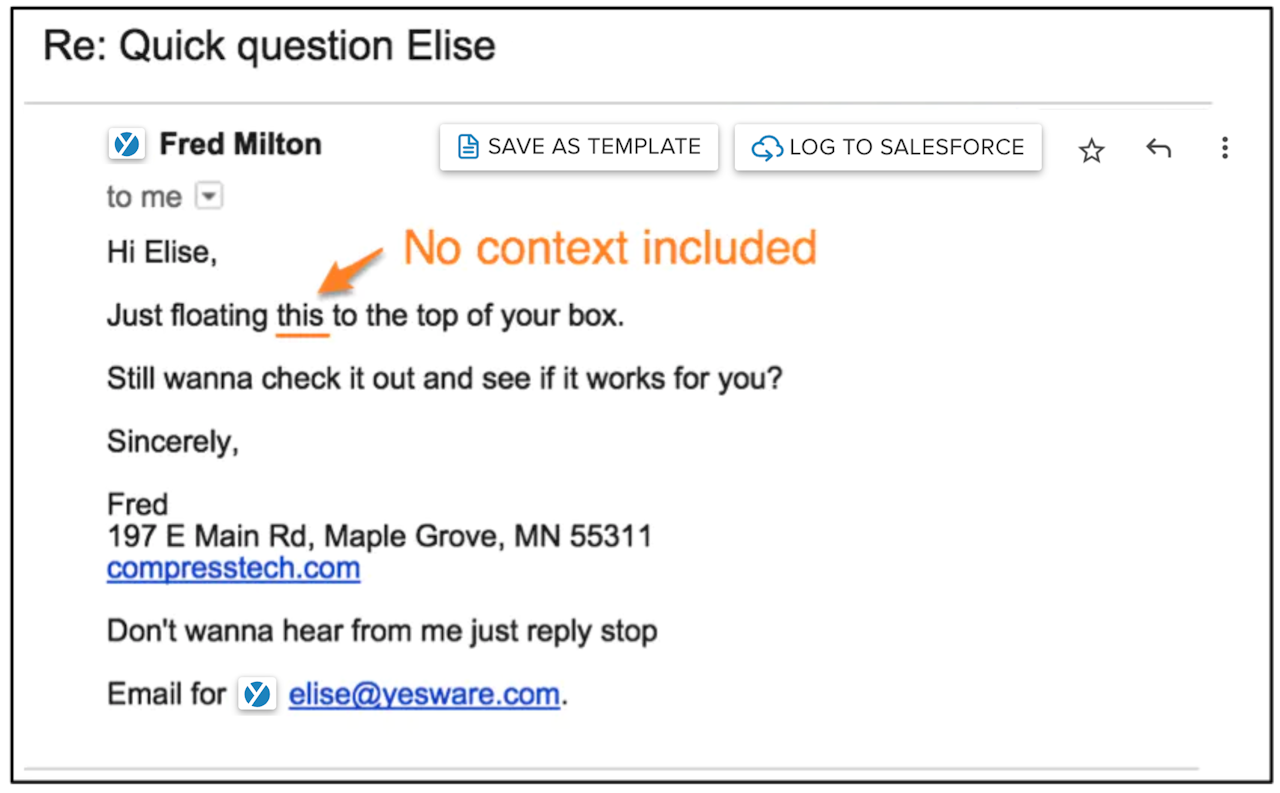
Without a prior email attached to the thread, your busy recipient is expected to spend their time figuring out who you are and why you’re reaching out. Chances are, they won’t.
How to fix this:
First, make sure your follow-up email is on the same thread as your initial message.
Second, reiterate exactly what you’re following up about. The idea here is to quickly jog their memory, so keep it short and to the point — two sentences or less. For example:
Hi Elise — I wanted to circle back on my email below re: setting Yesware up with a free trial of Widgets R’Us. Are you free for a 15 minute call this week?
Tip: If you’re gonna be out of the office — grab an out-of-office message here.
3. Sounding Like a Robot
Writing a mission-critical follow-up email shouldn’t require leading-edge leveraging of a soup-to-nuts communication strategy, yet it is always a good idea to apply outside-the-box thinking where it can make the maximum impact.
If you speak like that in your follow-up emails, you can bet your contact’s eyes are looking for the delete button. One of many follow-up email mistakes that are easily avoidable.
Jargon might seem like convenient shorthand, but it suggests to prospects that you’re on autopilot, thoughtlessly using phrases that are big but fluffy.
Rule of thumb: Write in a tone that you would talk in.
Here’s a great cheat sheet from Harvard Business Review that can help you hunt down these offending phrases in a hurry.
4. Giving up Too Soon
This mistake is way too common. Did you know that 48% of sales representatives never follow up at all?
The reality is: your recipients are busy and their inboxes are full. Giving up too soon will do nothing but put you behind.
According to Yesware’s data, if you don’t receive a reply to your first email, you have a 21% chance of getting a reply to the second one.
Still no reply? There’s still a 25% chance that you will eventually hear back from the recipient.
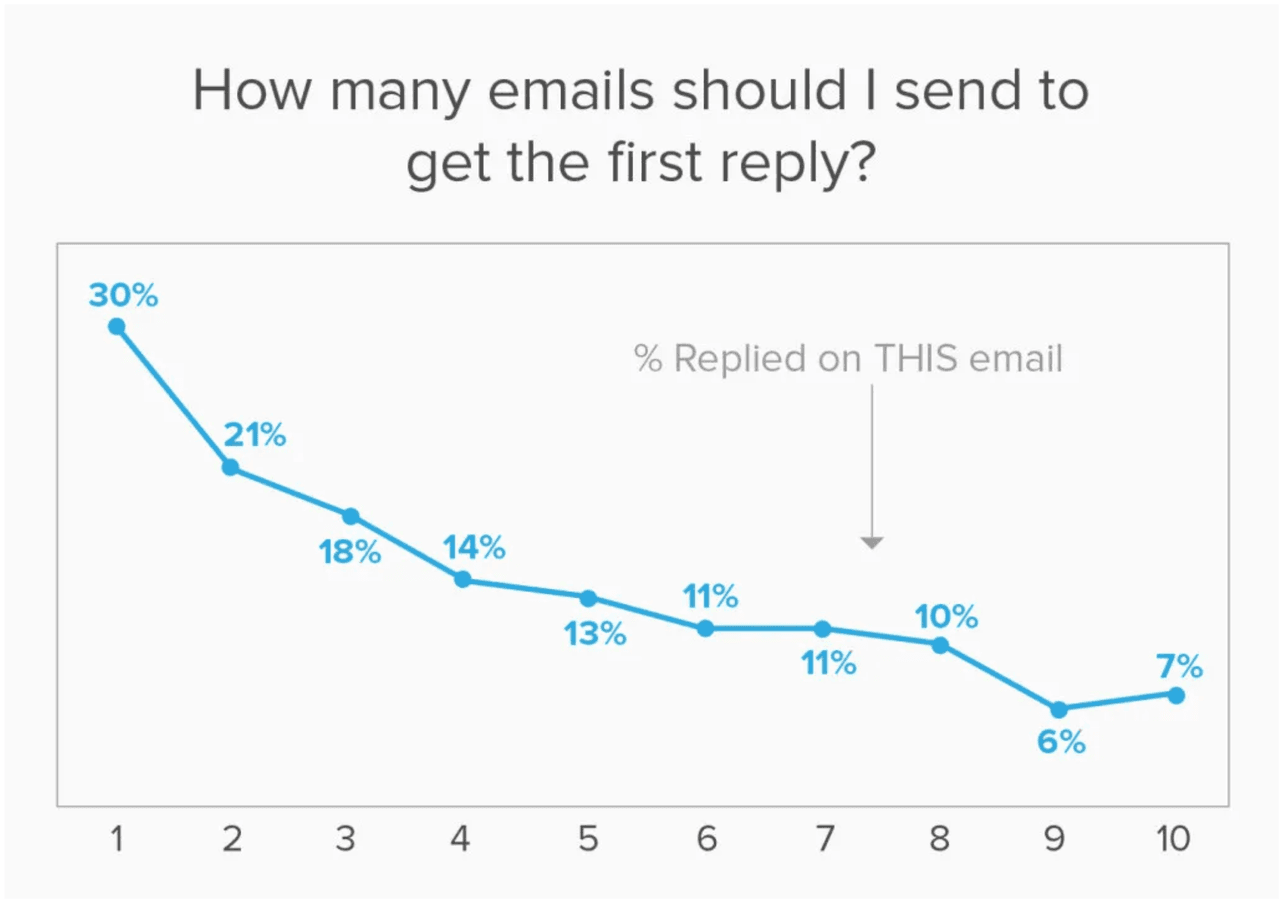
The study shows that by continuing to send more emails, you create more opportunities for your recipient to reply. Ultimately, a greater volume of emails should correlate to a greater total response.
If you don’t get a response from your first email, wait around 48 hours and reach out again. When you reach out again, reposition the value slightly differently, try a different strategy, and change up your messaging.
In a sales follow-up statistics study, we found that the most successful follow-up cadence is six touches in the span of roughly three weeks, based on replies.
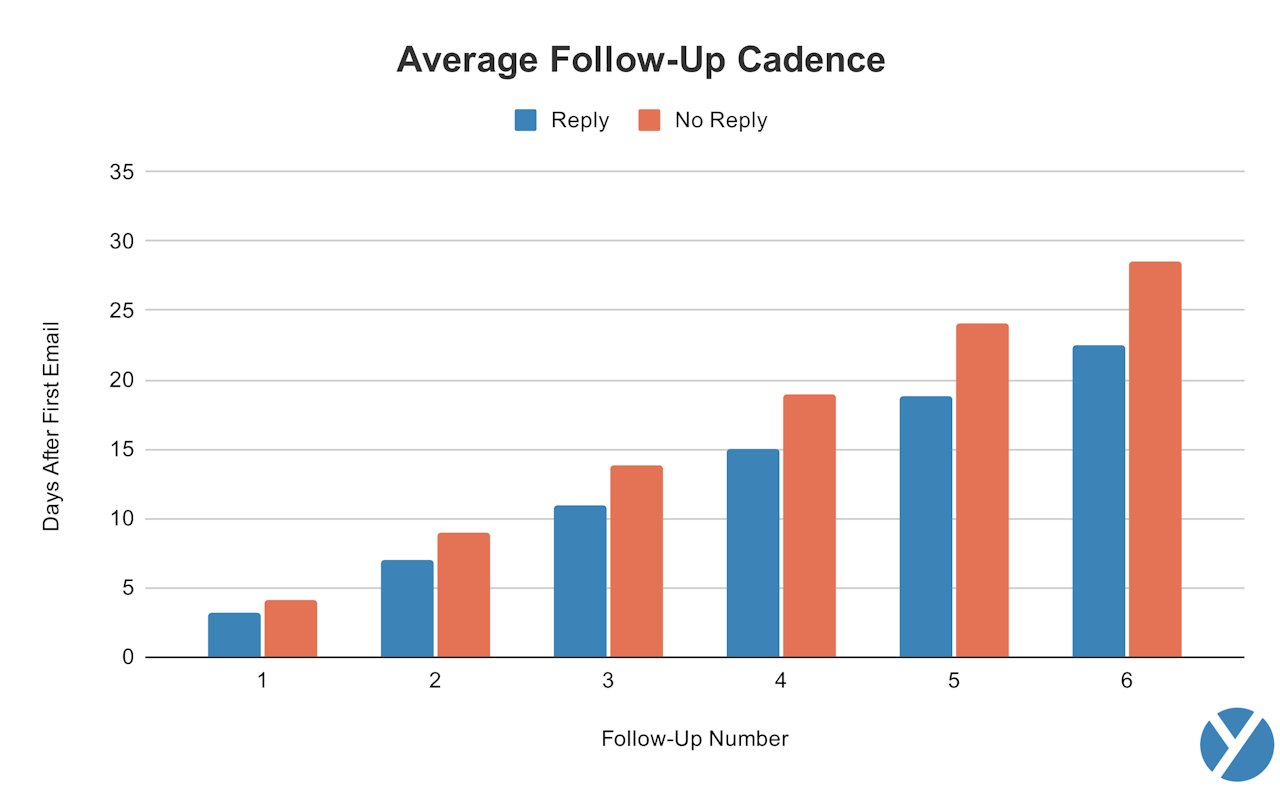
Rule of thumb: don’t give up.
Continue to re-demonstrate what you can do for the prospect with each follow-up.
5. Not Personalizing Your Emails Enough
We know you’re tired of hearing this, but the most damaging follow-up email mistake you can make is not personalizing your message enough.
When creating templates and inserting merge fields, don’t count job title and company name as personalization — everyone reaching out knows these. This doesn’t make you stand out from the crowd, in fact, it only makes you blend in more.
Various studies show the impact of personalizing your emails and the effect it has on your open rates.
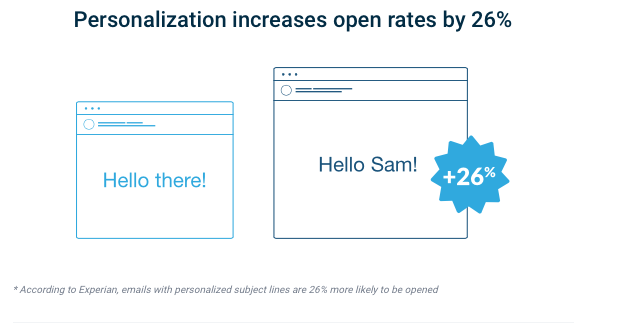
That being said, you need to incorporate differentiating factors. Try bringing up something about the recipient that shows you’ve done your research.
Here are some ideas:
- Compliment the recipient on a recent accomplishment
- Find an uncommon commonality
- Highlight mutual connections
- Reference to a conference or event you both attended
- Bring up a similarity in past experiences – similar companies, positions, etc.
Your email needs to address the recipient, cater to the recipient, and provide value.
6. Sending Your Follow-Up at the Wrong Time
Sending a follow-up can become discouraging when you don’t see any replies come in.
You might feel like you’re pestering your recipient, which makes it easy to conclude that it’s just not meant to be.
But that’s not the case.
According to Yesware’s data, the best time to send your email is 1 PM, based on reply rates. And the second-best time is 11 AM.
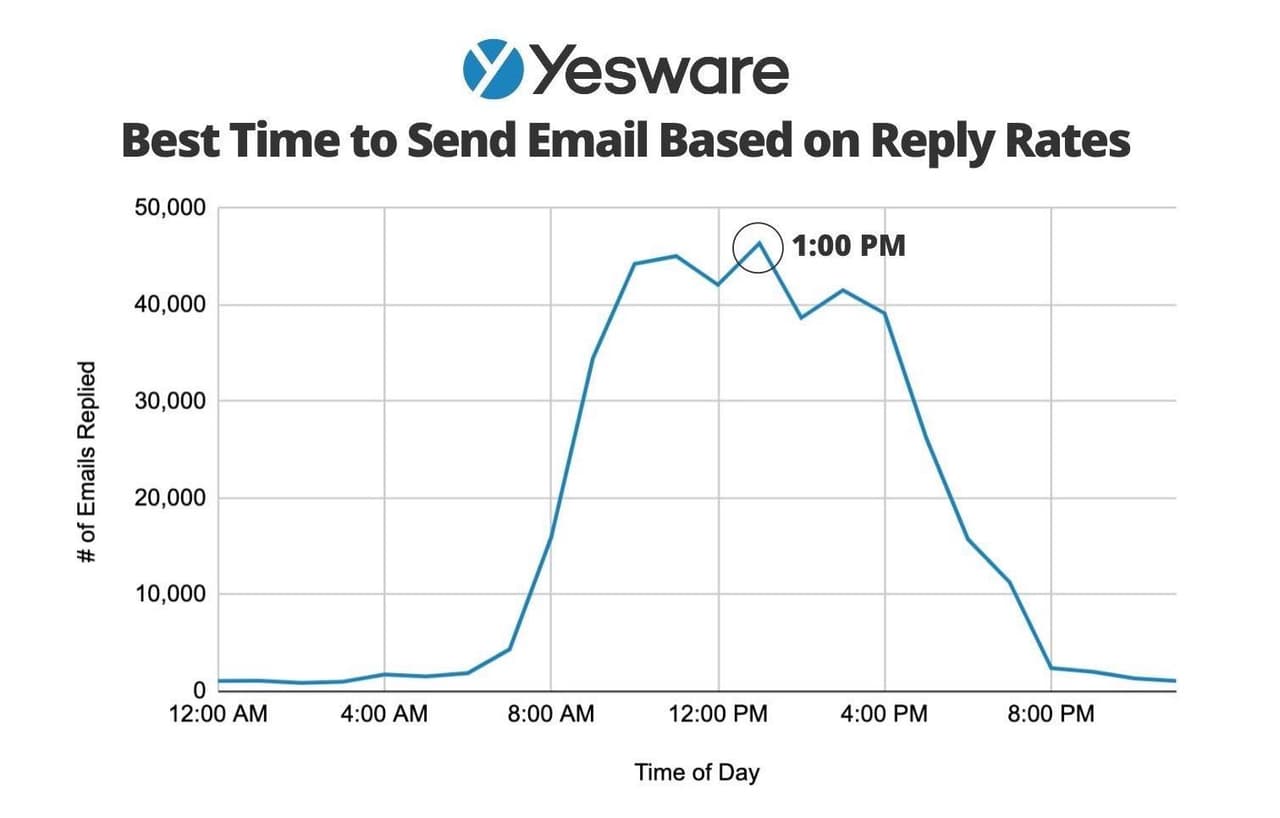 Test this out for yourself and see what times lead to the most opens and replies. Then, use these findings to improve your follow-up strategy.
Test this out for yourself and see what times lead to the most opens and replies. Then, use these findings to improve your follow-up strategy.
This leads us to our next point.
7. Ignoring the Data
It’s important to implement tools that give you insight and data on how your messages are performing.
This way, you can see what’s working and what’s not working and make those necessary changes.
For example, let’s look at Yesware’s Reporting feature. Here’s the Template by Template Report:
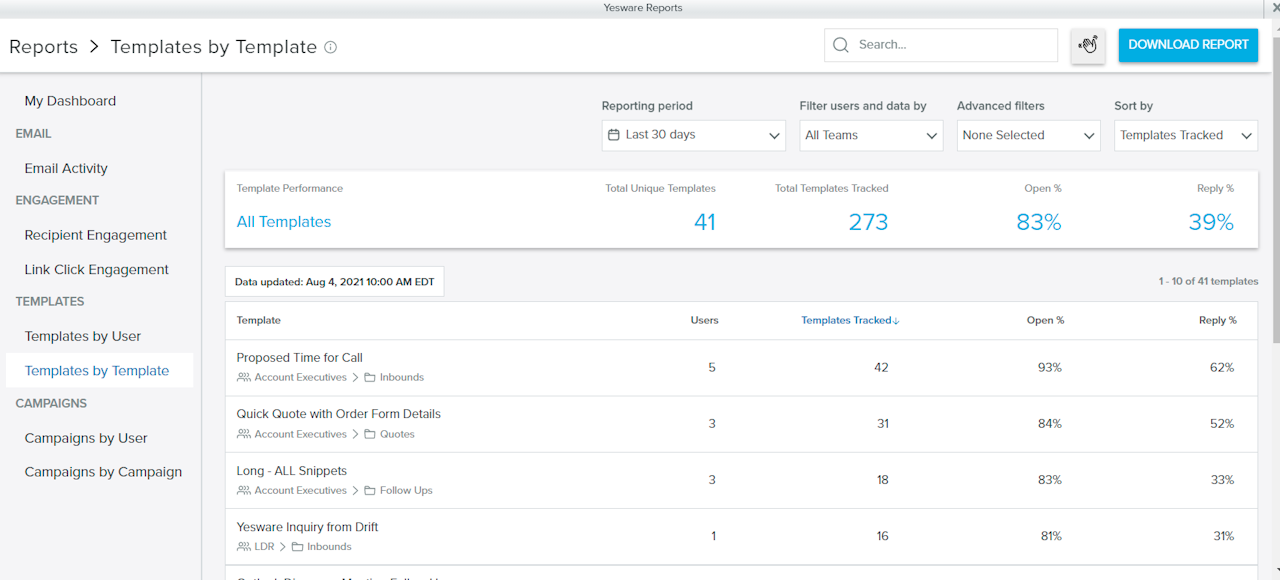
From this data, you can figure out what’s going wrong:
- If the recipient didn’t open your email — your subject line isn’t engaging enough.
- If the recipient opened your email but didn’t respond — the content of your message isn’t captivating enough.
- And if the recipient opened your email and clicked on a link or attachment but didn’t respond — your message resonated with them and they wanted to learn more. But then some hesitation sank in, or they weren’t ready to make a decision just yet.
In the above case, your next follow-up is very important for reducing fear and doubt. Send them case studies or social proof, re-iterate that they don’t need to make any decision just yet and you can answer all questions on a phone call.
Cater each follow-up to the actions of your recipient. Make the right changes and provide the right information according to the data.
8. Relying on Generic Follow-Up Messages and Touches
Another common follow-up email mistake is using the same generic messaging as everyone else.
Try something new, be different, and stand out!
If you’re not having luck with your follow-ups, make changes. Professional emails don’t always have to be so serious. Bring in some humor and make your recipient laugh. Be different and spontaneous in your messaging and try new things.
This helps distinguish yourself from the competition and will make your pitch and company more memorable to the recipient.
Here’s an example of incorporating some humor to an email template for re-engaging prospects that have gone MIA – and look at the reply rate!
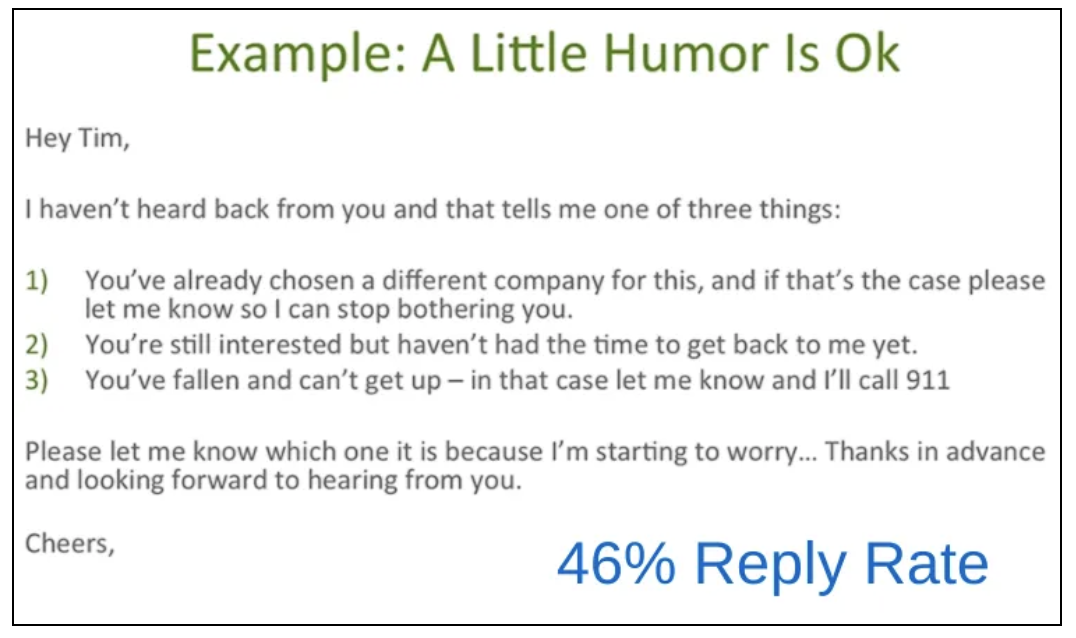
Treat each follow-up as a blank slate – try out new follow-up email subject lines, wordings, greetings, and calls to action.
Also, remember that people prefer different methods of communication.
Email not working for you? Try calling. Or try LinkedIn.
When creating a campaign, test different touch types and see what works best for you and your customers.
Tip: Grab high-performing follow-up email templates from us below to stand out from the crowd.
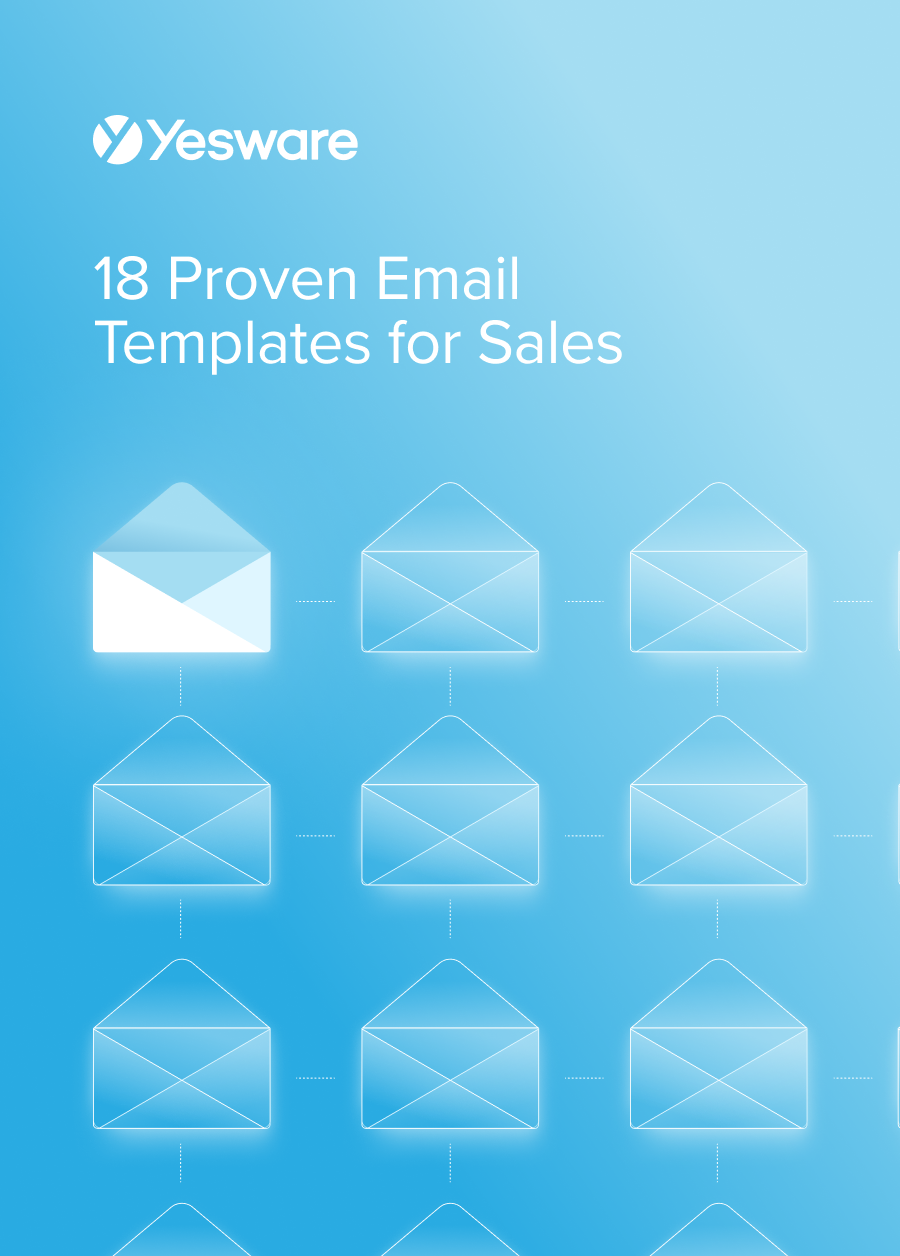 18 Proven Email Templates for SalesWinning email templates for cold outreach, follow-ups, and nurturing relationships – backed by data and real-world examples.
18 Proven Email Templates for SalesWinning email templates for cold outreach, follow-ups, and nurturing relationships – backed by data and real-world examples.
9. Not Realizing You’re Sending a Follow-Up Email
We can’t stress enough the importance of checking your CRM before sending an email.
As an example, three months after I had a call with a company, I got the email below from a different person on their team.
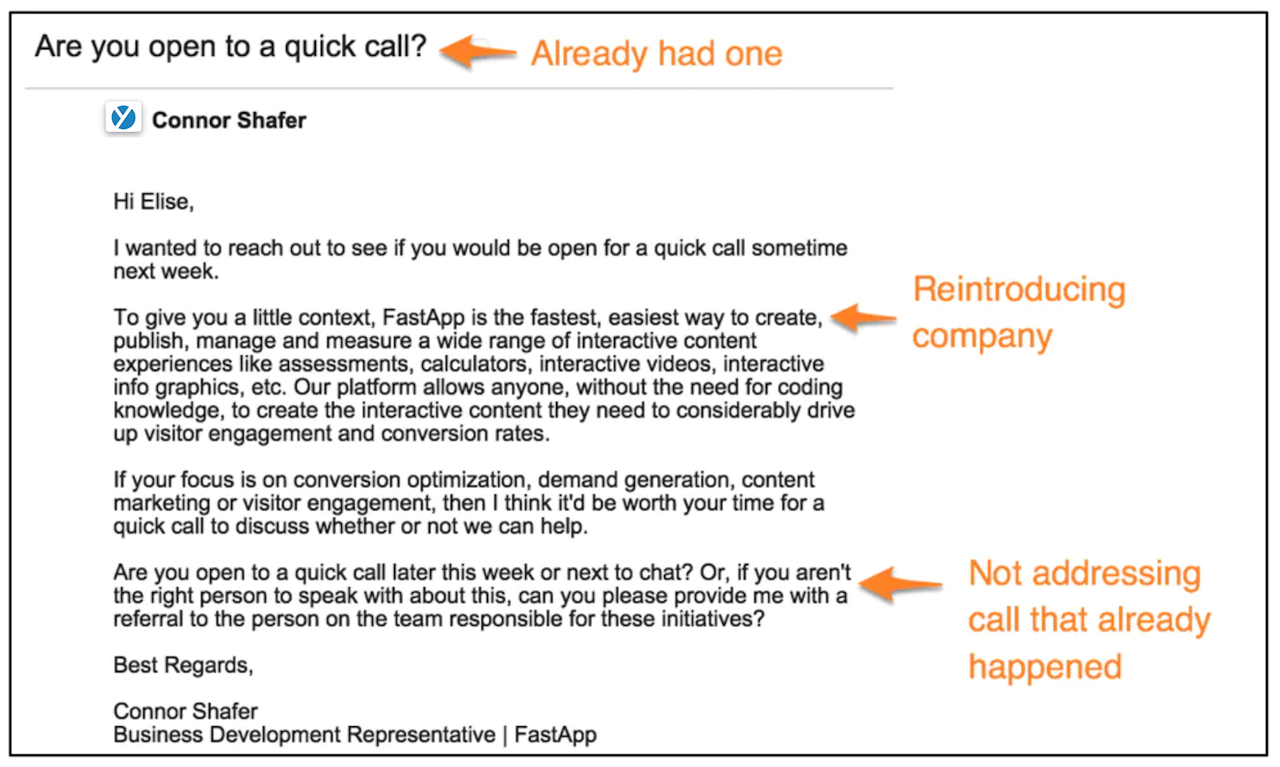
I already had the context (and a demo of) the company. Either the person I had a call with did not log the meeting to their CRM, or the sales rep above did not check the CRM. Whichever the case, it resulted in reintroducing the company to a warm prospect.
Emails like this hurt your chance of business. They ignore prior history, and they imply that you’re not top of mind with the sales team.
Always check your CRM to know the complete history of a prospective account.
10. Not Making It Easy for the Customer
B2B sellers know that their customers are as informed as ever. But with the vast information at hand, they’re also as overwhelmed as ever.
Making a decision isn’t easy, especially buying complex solutions and software.
Harvard Business Review found that when asking senior executives at companies to describe the complex-solution purchase process in one word, most responses were words like “hard,” “painful,” and “frustrating.” They also found that 65% of customers spent as much time as they’d expected to need for the entire purchase just getting ready to speak with a sales rep.
That’s why the best thing you can do as a salesperson is to make it easy for your potential customers.
Provide them the information they need, give them a free trial before spending any money, make the process as easy and seamless as possible. And eliminate any doubt.
If you can communicate this message in your follow-ups, you will see a vast increase in engagement, replies, and interest levels of your recipients.
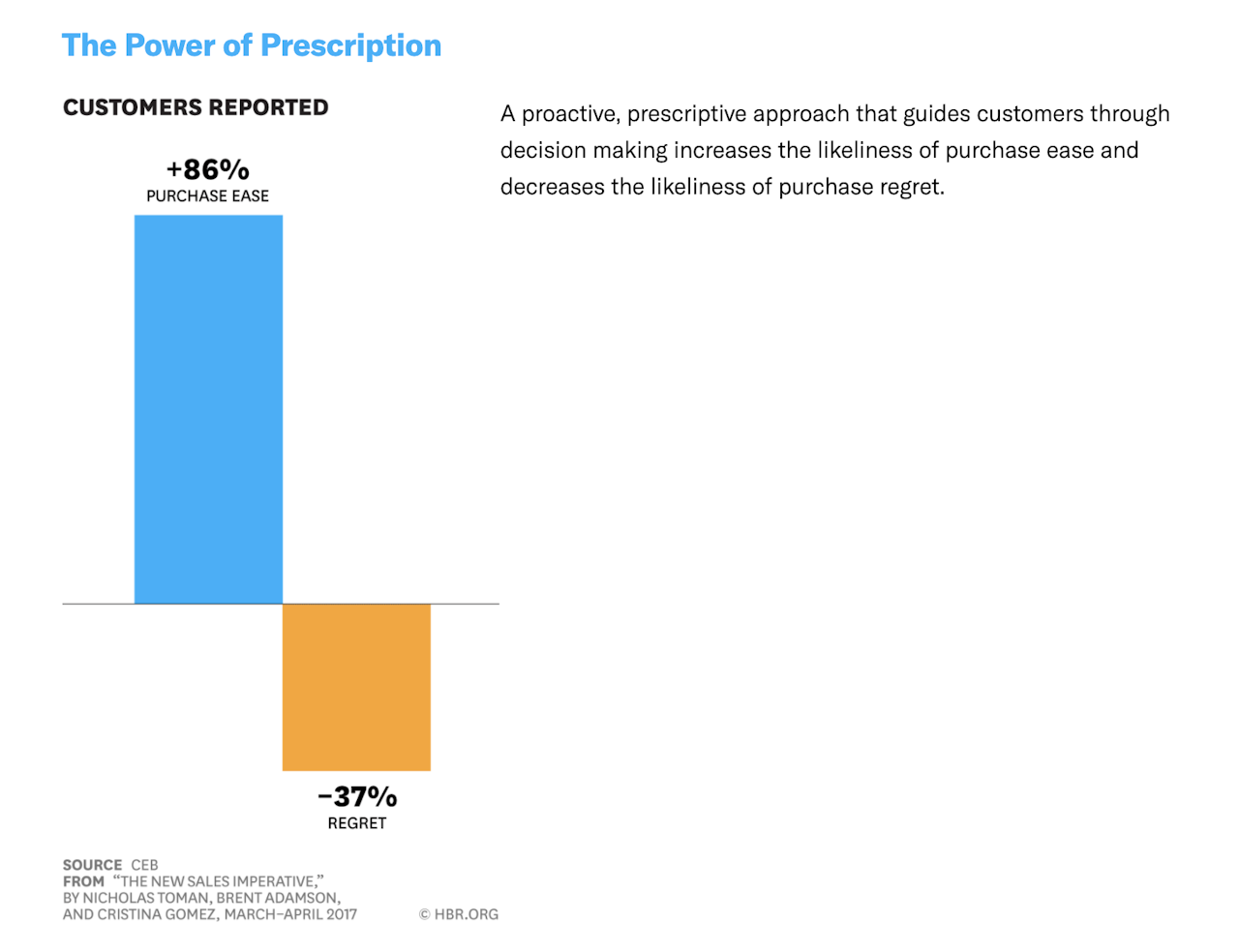
The study found that a proactive prescriptive approach increased purchase ease by 86%. This is done by presenting a concise offering and stable view of capabilities and explaining complex aspects of the purchase process clearly.
If you can communicate an easy buying process with your recipients from the get-go, you’ll see less hesitation and better customer satisfaction in the long run.
Don’t Forget the Basics
Keep these follow-up email mistakes top of mind next time you’re writing a follow-up.
Implement these techniques, see what works, and make necessary changes to your strategy.
And remember, never forget the basics — do your research, always have an appropriate greeting, an engaging subject line, and a clear CTA.
As long as you’re providing something valuable that you know will help your recipient, your follow-ups should come naturally.
Get sales tips and strategies delivered straight to your inbox.
Yesware will help you generate more sales right from your inbox. Try our Outlook add-on or Gmail Chrome extension for free, forever!
Related Articles
Jenny Keohane
Jenny Keohane
Melissa Williams
Sales, deal management, and communication tips for your inbox

